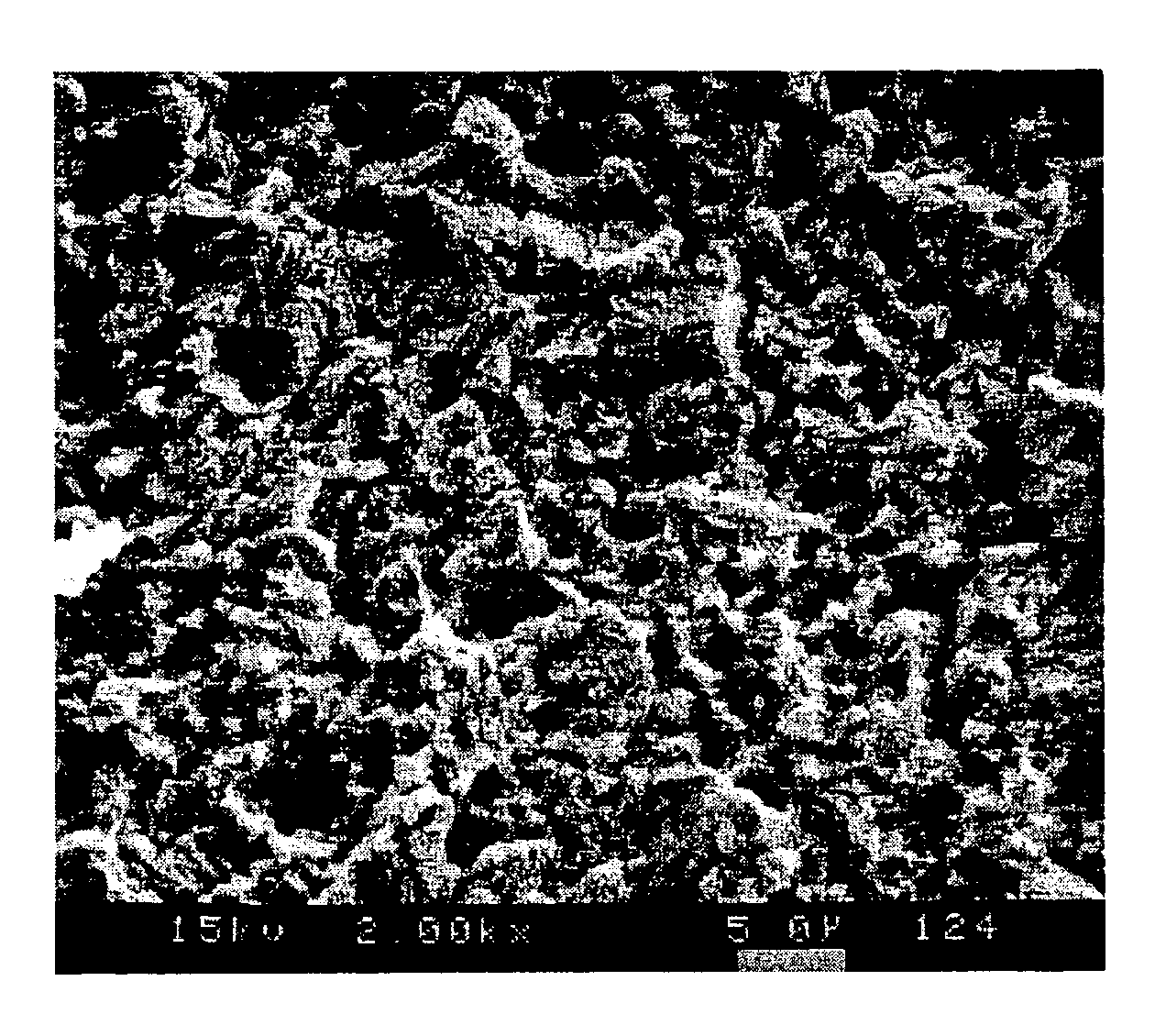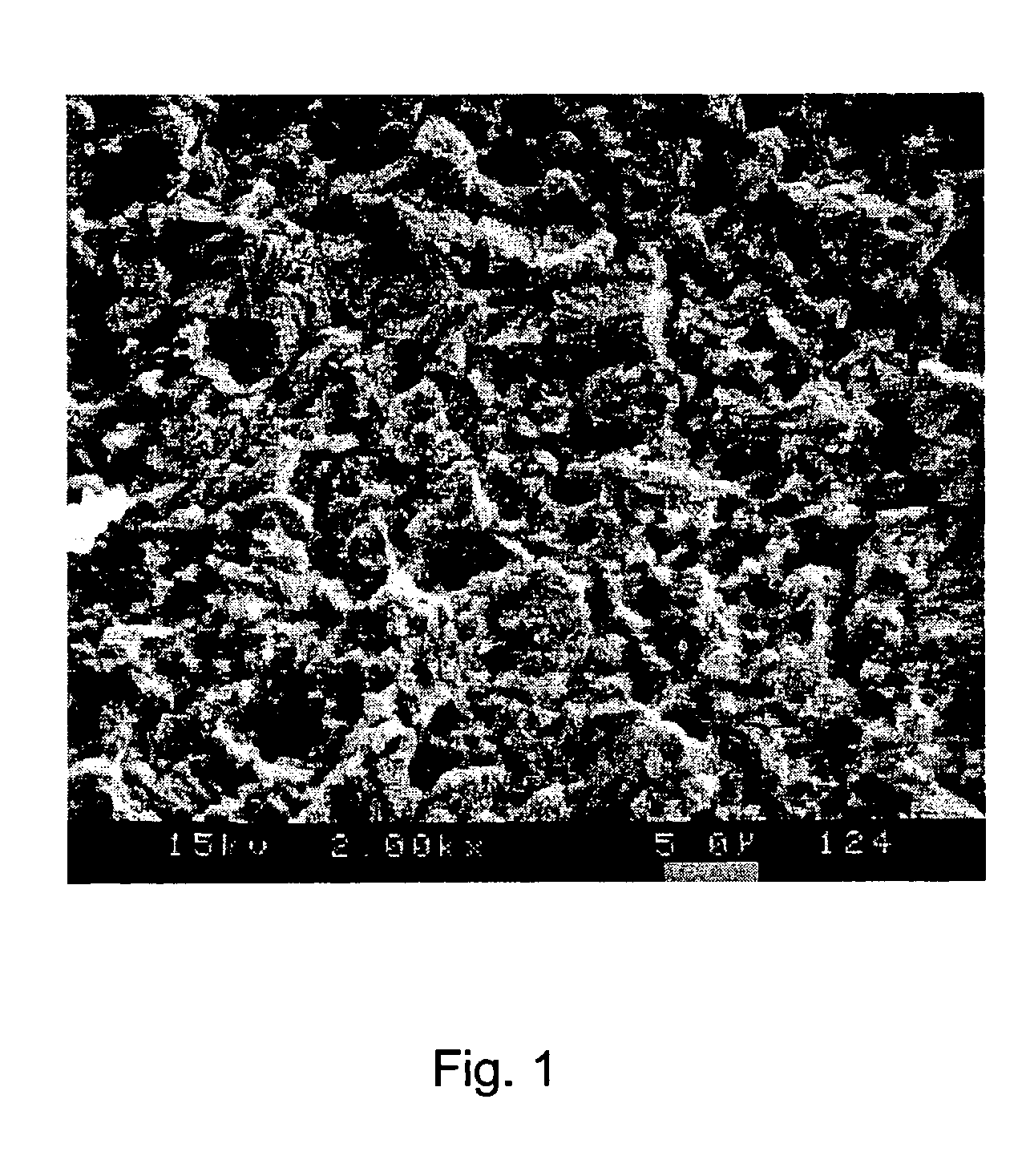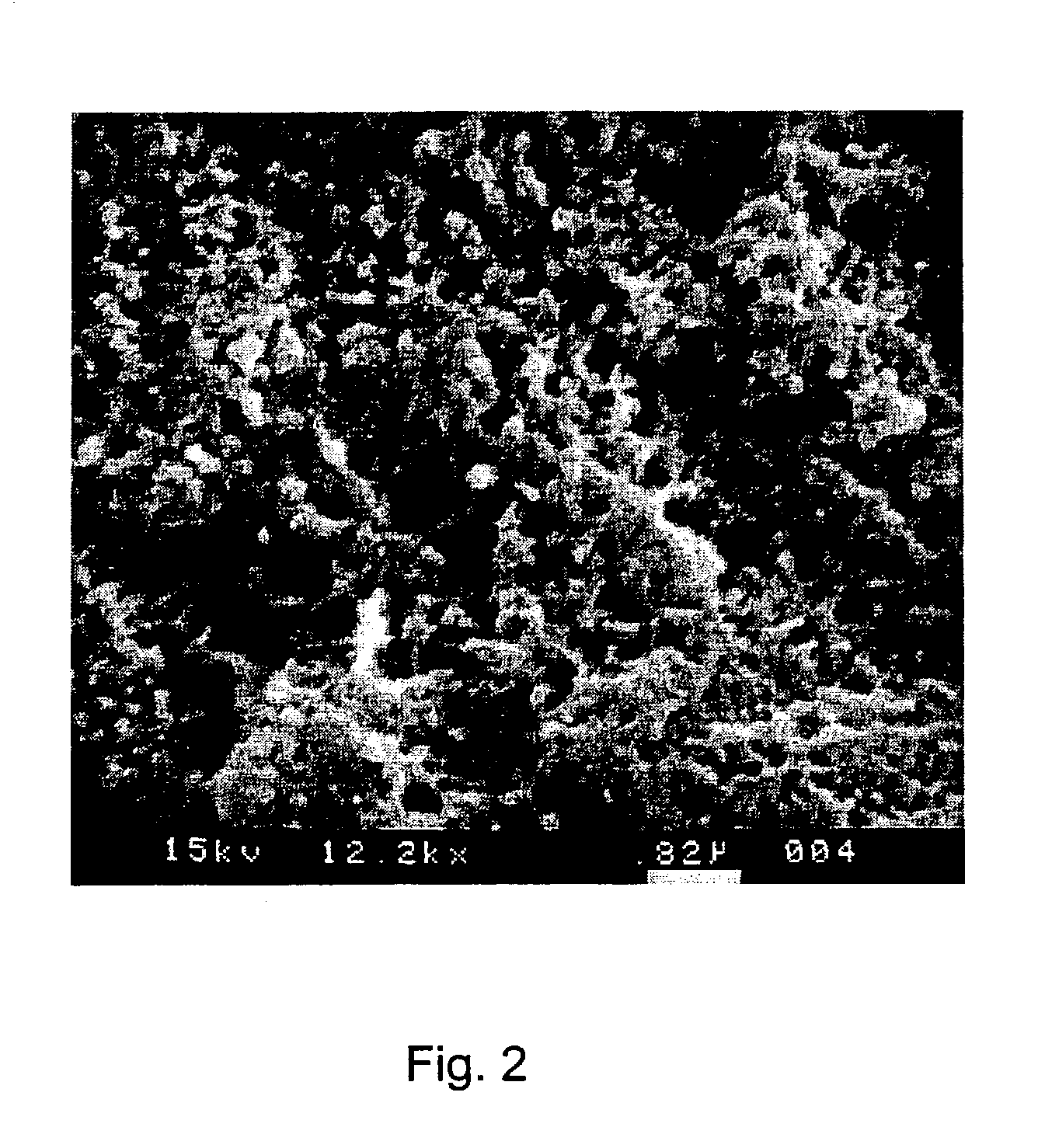Acidic treatment liquid and method of treating copper surfaces
- Summary
- Abstract
- Description
- Claims
- Application Information
AI Technical Summary
Benefits of technology
Problems solved by technology
Method used
Image
Examples
example 1
[0075]An aqueous solution according to the present invention was prepared by mixing the following components:
[0076]
sulfuric acid, 96% by weight50mlhydrogen peroxide, 35% by weight35ml5-aminotetrazole2gL-cystine0.1gAdd up with deionized water to 1 liter.
[0077]The solution was heated to 35° C. A printed circuit board, which had been plated by means of a bright copper bath (for example CUPRACID® BL-CT, sulfuric acid copper bath of Atotech Deutschland GmbH) preferably developped for the manufacture of printed circuit boards, was dipped into the solution according to the invention for 60 seconds. After treatment the copper surfaces were rinsed with warm deionized water and then dried with hot air. The copper surface obtained was mat and had a light pink color. The thickness of the copper layer etched off by means of the solution amounted to 0.9 microns. The microstructure of the copper surface exhibited two different structural (lateral) dimensions; (1) On the one hand semicrystalline st...
example 2
[0079]An aqueous treatment solution according to the present invention was prepared by mixing the following components:
[0080]
sulfuric acid, 96% by weight50mlhydrogen peroxide, 35% by weight35ml5-aminotetrazole2gthiobenzamide0.05gAdd up with deionized water to 1 liter.
[0081]The solution was heated to 35° C. for carrying out the method. A copper substrate which was prepared using CUPRACID® BL-CT was dipped into the solution for 50 seconds. After treatment the copper surfaces were rinsed with warm deionized water and then dried with hot air. The copper surface obtained was mat and had a light pink color. The thickness of the copper layer etched off by means of the solution amounted to 0.8 microns. The microstructure of the copper surface again exhibited two different structural (lateral) dimensions; (1) On the one hand semicrystalline structures were formed which had a structural size in the range of from 1–7 microns. (2) On the other hand pits and dendritic structures with a size of f...
example 3
[0083]An aqueous solution was prepared by mixing the following components:
[0084]
sulfuric acid, 96% by weight50mlhydrogen peroxide, 35% by weight35ml1H-1,2,3-triazolo [4,5-b] pyridine1.5gL-cystine0.1gAdd up with deionized water to 1 liter.
[0085]The solution was heated to 35° C. for carrying out the method. A copper substrate which was prepared using CUPRACID® BL-CT was dipped into the solution for 50 seconds. After treatment the copper surfaces were rinsed with warm deionized water and then dried with hot air. The copper surface obtained was mat and had a pink color. The thickness of the copper layer etched off by means of the solution amounted to 0.85 microns. The microstructure of the copper surface exhibited two different structural dimensions; (1) semicrystalline structures were formed which had a structural size in the range of from 4–10 microns; (2) and deep pits with a size of from 300–500 nanometers were formed within the larger semicrystalline structures.
PUM
| Property | Measurement | Unit |
|---|---|---|
| Density | aaaaa | aaaaa |
| Density | aaaaa | aaaaa |
| Density | aaaaa | aaaaa |
Abstract
Description
Claims
Application Information
 Login to View More
Login to View More - R&D
- Intellectual Property
- Life Sciences
- Materials
- Tech Scout
- Unparalleled Data Quality
- Higher Quality Content
- 60% Fewer Hallucinations
Browse by: Latest US Patents, China's latest patents, Technical Efficacy Thesaurus, Application Domain, Technology Topic, Popular Technical Reports.
© 2025 PatSnap. All rights reserved.Legal|Privacy policy|Modern Slavery Act Transparency Statement|Sitemap|About US| Contact US: help@patsnap.com



